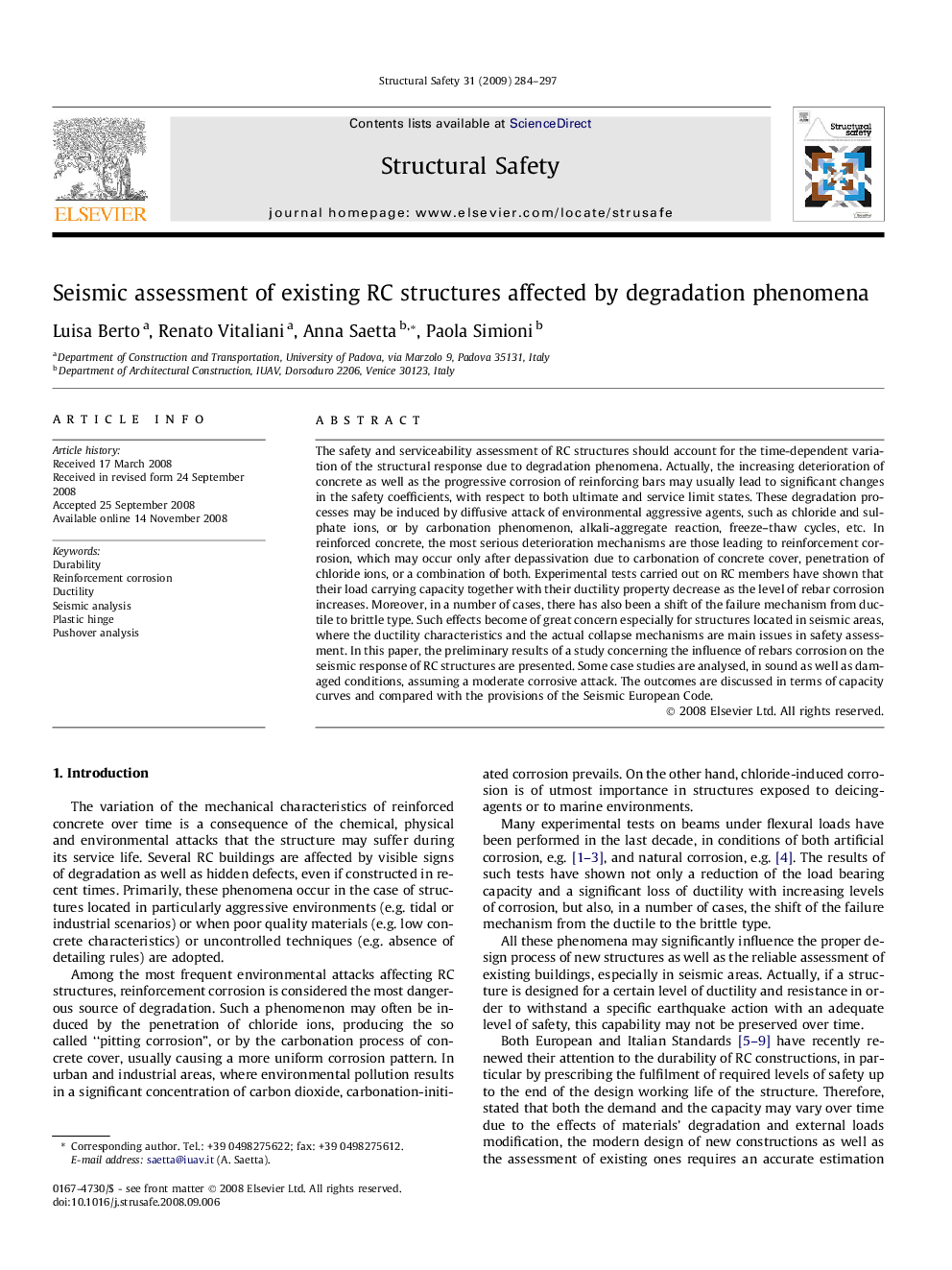| Article ID | Journal | Published Year | Pages | File Type |
|---|---|---|---|---|
| 307769 | Structural Safety | 2009 | 14 Pages |
The safety and serviceability assessment of RC structures should account for the time-dependent variation of the structural response due to degradation phenomena. Actually, the increasing deterioration of concrete as well as the progressive corrosion of reinforcing bars may usually lead to significant changes in the safety coefficients, with respect to both ultimate and service limit states. These degradation processes may be induced by diffusive attack of environmental aggressive agents, such as chloride and sulphate ions, or by carbonation phenomenon, alkali-aggregate reaction, freeze–thaw cycles, etc. In reinforced concrete, the most serious deterioration mechanisms are those leading to reinforcement corrosion, which may occur only after depassivation due to carbonation of concrete cover, penetration of chloride ions, or a combination of both. Experimental tests carried out on RC members have shown that their load carrying capacity together with their ductility property decrease as the level of rebar corrosion increases. Moreover, in a number of cases, there has also been a shift of the failure mechanism from ductile to brittle type. Such effects become of great concern especially for structures located in seismic areas, where the ductility characteristics and the actual collapse mechanisms are main issues in safety assessment. In this paper, the preliminary results of a study concerning the influence of rebars corrosion on the seismic response of RC structures are presented. Some case studies are analysed, in sound as well as damaged conditions, assuming a moderate corrosive attack. The outcomes are discussed in terms of capacity curves and compared with the provisions of the Seismic European Code.
